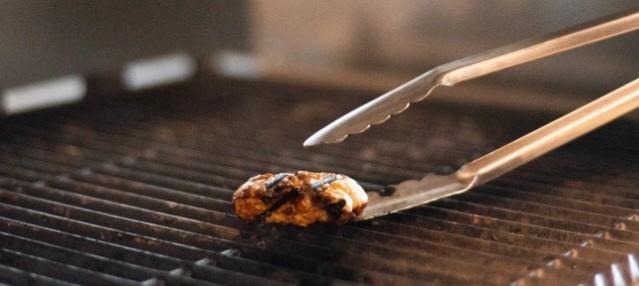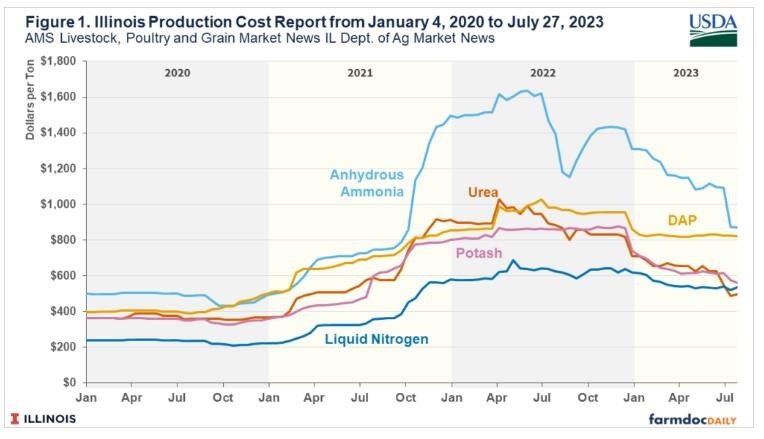Be on the lookout for roughleaf dogwood and smooth sumac and implement a control plan if needed.
Roughleaf dogwood control
Roughleaf dogwood is rarely grazed and invades grassland in the absence of prescribed burning. Pastures that are frequently burned usually do not have a roughleaf dogwood problem. A Konza Prairie study near Manhattan indicated that roughleaf dogwood increases dramatically on grazed or ungrazed watersheds with a burning frequency of 4 years, compared to annual burning. Once established, roughleaf dogwood is difficult to remove with fire alone as the plant usually leafs out after the burning season. Long-term late-spring burning may gradually reduce stands of roughleaf dogwood.
The optimum time to spray roughleaf dogwood is between the flower bud state and early seed production (Figure 1). A number of foliar-applied herbicides including triclopyr (Remedy Ultra), dicamba (Banvel), and picloram (Tordon 22K) used alone or in combination with 2,4-D will defoliate roughleaf dogwood, but actual mortality is usually less than 25%.
Roughleaf dogwood can be difficult to control. High-volume treatments providing greater than 50% mortality include 0.5-1% PastureGard HL (triclopyr + fluroxypyr), 1% Surmount (picloram + fluroxypyr), and 1% Grazon P+D + 0.5% Remedy Ultra (picloram + 2,4-D + triclopyr). All these herbicides are applied with water. Adding a 0.25 to 0.5% v/v non-ionic surfactant may enhance control. Aerial applications should be applied in a minimum 3 gallons per acre total spray solution to insure adequate coverage.
A single application of any herbicide does not completely eliminate roughleaf dogwood, but may open up the stand enough to carry a fire. In subsequent years, a combination of prescribed burning in the late spring followed by a herbicide application 4-6 weeks post burning should provide good control.

Figure 1. Roughleaf dogwood in full bloom. Photo by Walt Fick, K-State Research & Extension
Smooth sumac control
Late-spring burning will keep smooth sumac shorter in stature, but generally increases stem density. The optimum time to spray smooth sumac is between the flower bud stage and early seed production (Figure 2). Smooth sumac is among the easiest woody plants to control with herbicides if applied at the proper time. Smooth sumac is controlled with 2-3 pint/acre 2,4-D with ground or aerial application.

Figure 2. Smooth sumac in early seed production stage. Photo by Walt Fick, K-State Research & Extension
Measures that can mitigate both roughleaf dogwood and smooth sumac
Soil-applied materials such as Spike 20P (tebuthiuron) and Pronone Power Pellets (hexazinone) can provide control of roughleaf dogwood and smooth sumac. Spike 20P should be applied during the dormant season at 0.75 ounces product per 100 square feet. This is equivalent to 20 pounds of product per acre. Pronone Power Pellets should be applied when the soil is moist and rainfall is expected within 2 weeks of application. For plants 3-6 feet tall apply 2-4 pellets at the base of the plant. Expect to see grass damage following use of Pronone Power Pellets. These dry soil-applied products may be useful in areas where spray drift may cause considerable non-target damage.
Growing season burns, e.g. in August, have the potential to reduce stands of roughleaf dogwood and smooth sumac.
Source : ksu.edu